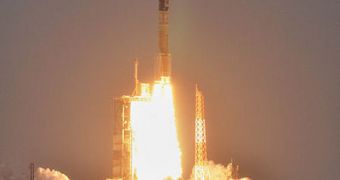The Japanese space agency JAXA launched on Saturday another advanced military satellite into the low-Earth orbit. The instrument was carried aboard an H-2A delivery system, which is of the same type used for the new H-2 Transfer Vehicles (HTV), which are capable of reaching the ISS. The new satellite is aimed at boosting the nation's already super-advanced capabilities in space, but it was launched without honors or media coverage, Space reports.
The launch took place at 0121 GMT on Saturday (8:21 pm EST Friday), as the delivery system carrying the advanced payload took off from the Yoshinobu complex. The facility is located on the Tanegashima Island, from where most of Japan's space launches take place. The H-2A rocket soared to the skies at 10:21 am local time, from the Launch Pad No.1 facility at the complex. Reports from the site qualified the mission as a success, quoting Japanese government officials.
The top secret Information Gathering Satellite (IGS) was inserted into its polar orbit more than 15 minutes after launch. This type of orbits is the most suitable for such observations and information gathering, and it is widely used by governments around the world. The H-2A rocket was propelled by two liquid hydrogen-powered stages. Additional thrust was provided by two solid fuel-burning boosters, which were reported as having been dropped some two minutes into the Saturday flight.
In spite of the fact that numerous preparations were underway at the space center, to prepare all facilities required for the launch, nothing was shared to the media. A camera at the space center, which was usually aimed at the launch complex, was turned away from it as soon as the delivery system was rolled out and prepared for launch. Additionally, JAXA did not make any announcements of the new launch. The country set up its spy-satellite network after a series of missile tests North Korea ran in 1998, which caused a lot of panic in Japan.
The $500-million IGS satellite will join sister spacecraft in polar orbit, and will become the fifth member of the spy family currently circling the Earth. It features an advanced camera and a small telescope, which will allow it to provide government agencies or civilian applications with the observing capabilities they need. Two similar instruments were lost in an H-2A launch, in 2003.

 14 DAY TRIAL //
14 DAY TRIAL //